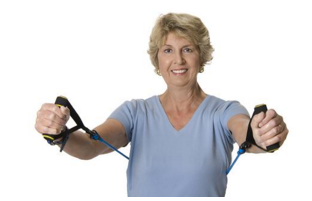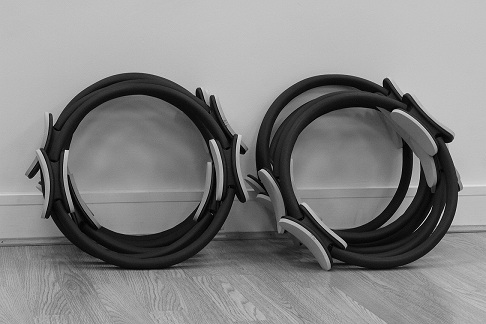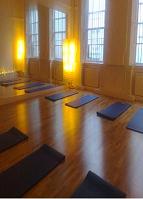In this Core Strength Video you are going to learn three Progression Core Stability & Core Strength Exercises >>> with a Foam Roller <<< that
(1) Strengthen your global abdominal muscles, (2) challenge your waist (exercise no. 2) and lower abdomen (exercise no. 3), (3) focus a bit more on shoulder stability and shoulder placement.
.
Keep your core muscles, your TVA (Transverse Abdominis) slightly engaged throughout to keep these exercises safe for your lower back. Always consult a GP / physician before starting a new exercises regime, especially if you haven’t exercised for a long time on a regular basis.
(1) Foam Roller – Plank static:
( challenges your general / global core muscles, emphasizes shoulder stability and upper body strength a bit more than a normal straight arm plank)
_
Place your hands shoulder distance apart on the foam roller, your palms are below your shoulders. On a breath out straighten one after the other leg, your feet are hip-distance apart.
Maintain a straight line from the top of your head, down to your ankles. Avoid dropping your hip, as this would most likely lead to an over arched lower back / lumbar spine, which would place unnecessary pressure on your lower back.
Keep your shoulders relaxed, draw your shoulder blades down your back towards your bottom.
Maintain a steady, continuous breath, avoid holding your breath.
Hold for 8-10 breath cycles, keep your TVA (Trans Versus Abdominis), your core muscle engaged throughout.
Sit w.
(2) Foam Roller – Plank & Straight Leg Side Kick)
( same as above, plus additional focus on your waist, “love-handles” 🙂 )
_
This is a “simple” variation of above mentioned Plank exercises. You start with the same set-up as above, but instead of holding the plank position you kick your straight leg from the hip to the side.
.
Breath out as you kick your leg to the side, breath in as you switch sides.
The rest of your body stays ideally completely still and stable, you just move from your hip joint.
.
Keep alternating sides, legs until you have done a maximum of 10 kick to the right and left.
Increase the number of repetition over time, allow your body to get used the exercise and challenge.
..
(3) Foam Roller – Plank plus Knee Pull-In
( same as above, plus additional focus on your lower abdominal muscles / abs )
This is another “simple” 😉 variation of above mentioned Plank exercises. You start with the same set-up as above, but instead of holding the plank position you draw you knee straight underneath your chest and upper-body. The movement is controlled, steady, slow – this will challenge your core muscles more.
.
Breath out as you draw one knee or leg in, breath in as you switch sides.
The rest of your body stays ideally completely still and stable, you just move from your hip joint.
.
Keep alternating sides, legs until you have done a maximum of 10 kick to the right and left.
Increase the number of repetition gradually over time, allow your body to get used the exercise and challenge.
ame as above, just crisscross your arms in front of your chest to intensify the movement..
Let me know how you get on and e-mail or facebook me your questions, comments or feedback.
Thank you
_ Martin







